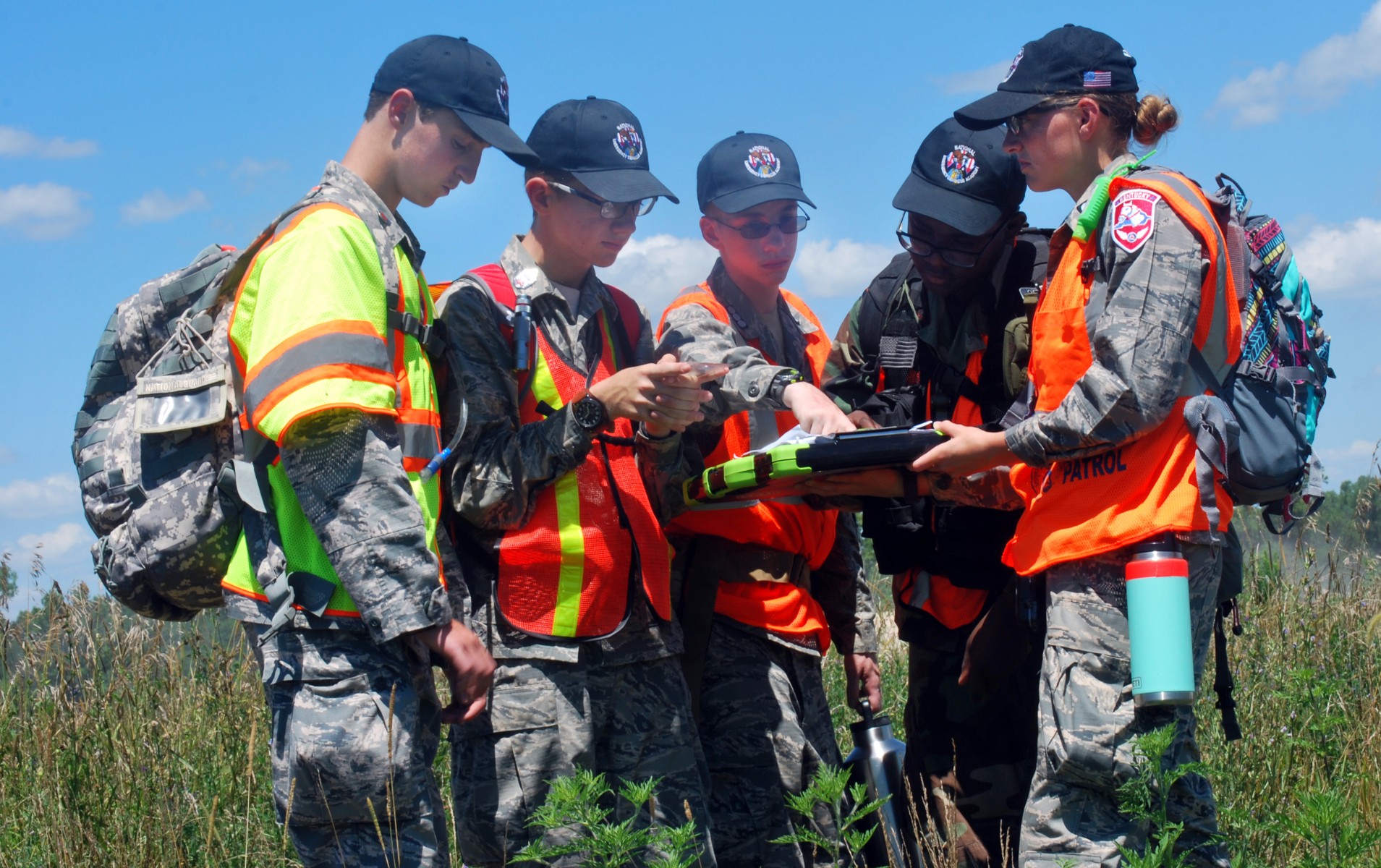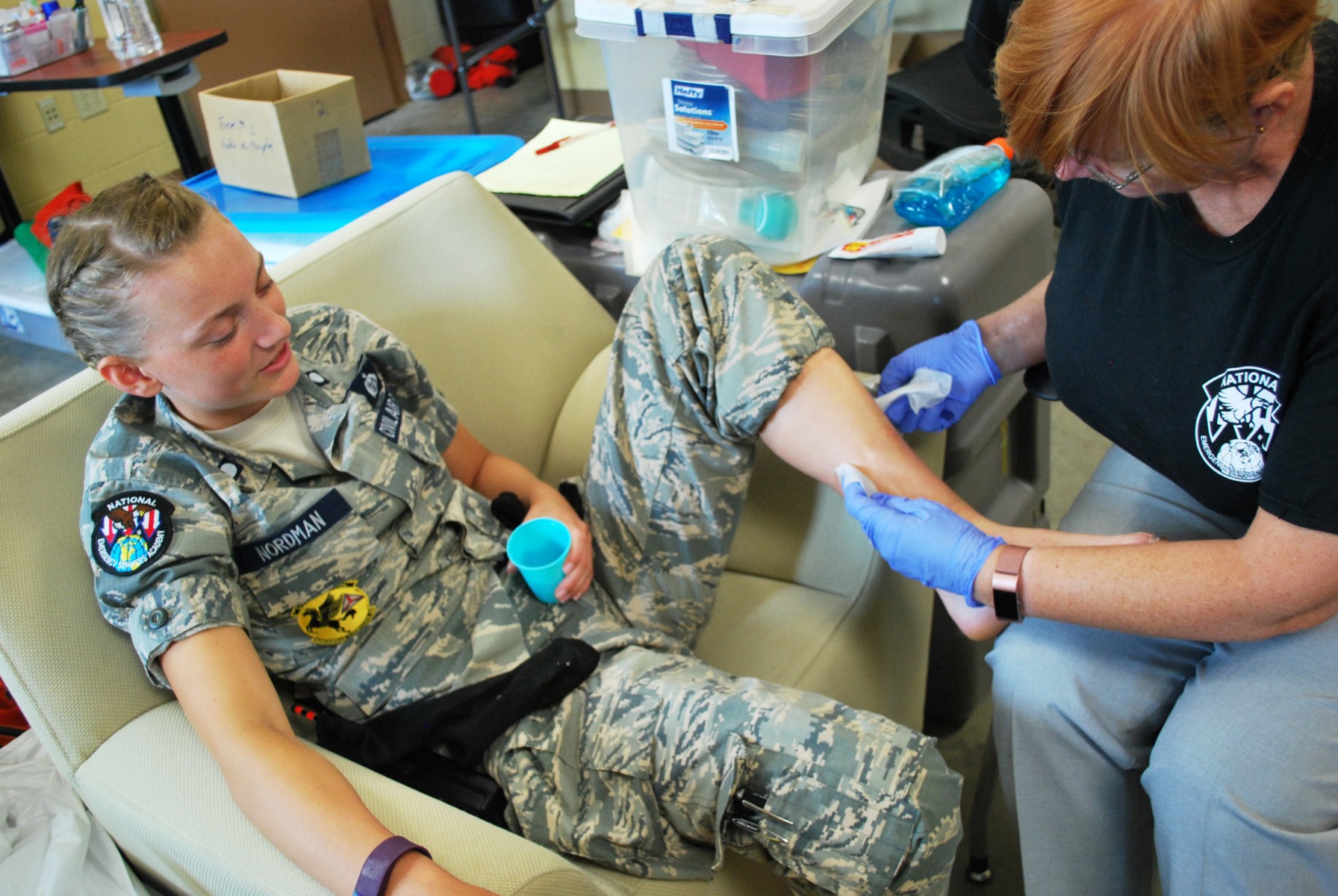-------------------------------------
Vicky Travis
Contributing Writer
September is National Preparedness Month, prompting many government agencies to stress the importance of anticipating emergencies to the general public ... because they will happen.
For Civil Air Patrol, though, preparedness has always been in the organization’s DNA.
For Civil Air Patrol, though, preparedness has always been in the organization’s DNA.
“We prepare to support a variety of disasters, but obviously also support search and rescue missions, communications activities and many other Air Force missions like air defense intercept training and helping training warfighters in the use of sensors,” said John Desmarais, CAP's national operations director.
“Bottom line, we are probably not the CAP that people may have seen years ago. We do so much more now, as we continue to change to meet the needs of our nation.”
This month, some 3,000 global, national and local governments and private and public health institutions are encouraging preparedness efforts for all: The effort to help Americans prepare for disaster is detailed on the official website for the Department of Homeland Security.
Facing Florence
Hurricane Florence is bringing many of these lessons home with a vengeance after barreling onshore in North Carolina on Sept. 14. Residents throughout the Carolinas faced their own personal emergencies; many still are.
For the multitudes who evacuated and for others affected by widespread flooding, preparedness could include maintaining a supply kit, knowing their evacuation path and setting up communication with family.
Hurricane Florence is bringing many of these lessons home with a vengeance after barreling onshore in North Carolina on Sept. 14. Residents throughout the Carolinas faced their own personal emergencies; many still are.
For the multitudes who evacuated and for others affected by widespread flooding, preparedness could include maintaining a supply kit, knowing their evacuation path and setting up communication with family.
CAP members go well beyond such basics.
“In preparation for the hurricanes, our members made sure equipment was ready and secure to ride out the storms, and once the storm cleared they have responded by collecting imagery, supporting emergency communications, transporting critical supplies and meeting any other requests we can reasonably support,” Desmarais said.
In doing so, they were drawing on strenuous training at the local, wing, region and national levels.
Emergency services training
CAP members undergo a wide variety of training, whether in the air, on the ground or the classroom. They focus on such topics as flying, professional development, leadership at the senior member and cadet levels, aerospace education, high-tech equipment operation and youth development.
CAP members undergo a wide variety of training, whether in the air, on the ground or the classroom. They focus on such topics as flying, professional development, leadership at the senior member and cadet levels, aerospace education, high-tech equipment operation and youth development.
The highest-profile emergency services training opportunities are those offered through national activities like Hawk Mountain Ranger School and the National Emergency Services Academy (NESA)


“The training we do at NESA (and other programs) all go toward meeting our broader goal of being able to respond when called upon,” Desmarais said.
Hawk Mountain
In 1953, Air Force pararescue and survival instructors trained Pennsylvania Wing search and rescue teams at Westover Air Force Base, Massachusetts. In 1956, the school moved to property at Hawk Mountain, Pennsylvania, belonging to Col. Philip Neuweiler, Pennsylvania Wing commander from 1947-1970.
Hawk Mountain
In 1953, Air Force pararescue and survival instructors trained Pennsylvania Wing search and rescue teams at Westover Air Force Base, Massachusetts. In 1956, the school moved to property at Hawk Mountain, Pennsylvania, belonging to Col. Philip Neuweiler, Pennsylvania Wing commander from 1947-1970.
“We’re teaching cadets and senior members to go back and build emergency services in their unit and then teach and lead members in the field,” said Lt. Col. Brian J. Cuce, director of emergency services for the Pennsylvania Wing. “Anyone who graduates the school is encouraged and able to go back to their units and teach the skills they learned as a basic student.”
Training at Hawk Mountain starts with foundational skills. From there students may progress to Fully Qualified and Expert Ranger levels and choose either the Ranger track or Medic track.
This summer, 240 members from most CAP wings came to Kempton, Pennsylvania, for Hawk Mountain.
NESA
In 1996, Desmarais began the National Ground Search and Rescue School at the Miller School of Albemarle in Charlottesville, Virginia. Two years later it moved to Camp Atterbury in Edinburgh, Indiana.
In 1996, Desmarais began the National Ground Search and Rescue School at the Miller School of Albemarle in Charlottesville, Virginia. Two years later it moved to Camp Atterbury in Edinburgh, Indiana.
The school evolved into the National Emergency Services Academy, and it now consists of three schools: Ground Search and Rescue, Mission Aircrew and Incident Command System. NESA added training for incident staff in 1998 and mission aircrew members in 2000.
This summer 490 participants attended, representing every CAP Wing. Many are currently working to support Hurricane Florence operations.
Looking ahead
A major update is in the works to align all CAP training, led by NESA staff members and experts from across the country, which embrace changing federal standards and reflect technological advances such as cell phone and radar forensics, airborne sensor collection and management.
A major update is in the works to align all CAP training, led by NESA staff members and experts from across the country, which embrace changing federal standards and reflect technological advances such as cell phone and radar forensics, airborne sensor collection and management.
Work is also underway to offer training at other times of year and locations as well as through distance-learning opportunities. Several new course offerings were rolled out during the summer and are now available in smaller sessions throughout the rest of the year.
“The newest addition is for small Unmanned Aerial System (sUAS) training to be added to the slate of main school courses and year-round sessions,” Desmarais said. “Some people don’t know we are doing that.”
Staff members are working with wings across the country to provide sUAS training in October in preparation for expanding this program.
At Hawk Mountain, new initiatives include making training more accessible through online resources. Also, Cuce is looking into appointing liaisons in each CAP region and using them to develop weekend training.
As both Hawk Mountain and NESA refine and update their training, CAP members have choices.
“NESA is probably more of a traditional school environment, where there is a combination of field and academic work in a classroom,” Desmarais said. “Hawk Mountain has students in the field throughout the event, sleeping in shelters and tents the whole time.
“Both have value, and some people prefer one environment over the other.”
But, the end goal is the same – to have highly trained members who are prepared to meet the needs at hand.





